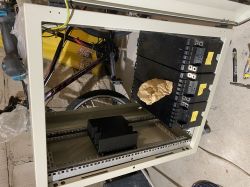efi222 wrote: The more we start saving, the faster prices will rise.... The balance has to add up.
And the more we start to consume, the more prices should fall. The balance should work both ways, so it should be symmetrical.
It's now unclear whether installing solar panels and electricity storage is to the utilities' liking or not.
Added after 5 [minutes]:
LEDówki wrote: Batteries do not like to be charged in the cold. Only lead-acid ones somehow tolerate it. Alkaline and lithium ion ones have to be charged at positive temperatures. Such is the case. The outdoor box must be heated.
Lithium ion batteries can be discharged in the cold.
Rechargeable batteries in general work less well in cold weather, have less capacity and deplete more quickly.
Added after 2 [minutes]:
cefaloid wrote: And this is not just about the risk of fire. But even about the various gases that can be released from any energy bank in the house and when, for example, we are sleeping. If the storage facility is in a dedicated building - there is no problem.
It depends what the temperature is in that building. If it's an unheated outbuilding or garage, there's still a chance of maintaining a reasonably bearable temperature for the ac. And if it's a separate building, you'd have to do some heating during the lowest temperatures outside, so the cost of maintaining the storage goes up.
Added after 2 [hours] 12 [minutes]: .
@remzibi remzibi wrote: After 3 months of testing with half the capacity filled (estimated actual capacity at the moment around 12kWh, once full it will be over 24kWh), the whole thing is working sensationally 🙂 .
Let's assume that the storage has a capacity of 24kWh. Do I understand correctly that this means that with an averaged or continuous power consumption of 6000W, this storage can give energy for about 4 hours? I understand that, in general, it is the capacity expressed in kWh that is divided by the power consumption in kW and the approximate possible operating time from full charge is obtained.
Is it fair to say that the storage is the same as a UPS? As far as I understand it, both this storage (and any other similar) and a UPS work in such a way that when external energy is supplied, it is recharged, and when external energy disappears, it is the storage that powers the house.
What capacity (run time at similar power consumption) and price would a factory industrial UPS of similar dimensions to this storage unit have? I'm guessing that this storage unit came out much cheaper than a factory UPS with similar run time of similar power (or several UPSs connected in series) due to the use of recycled cells (and this is probably the most expensive part of the UPS and storage unit).
In my opinion, it makes no difference to either the UPS or the warehouse whether it is powered all the time with short interruptions due to a fault, or whether it is powered only during the daytime with a break at night if powered by PV.





